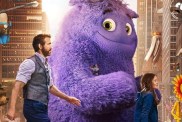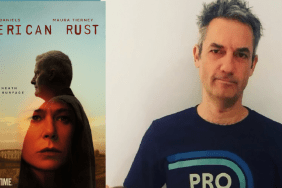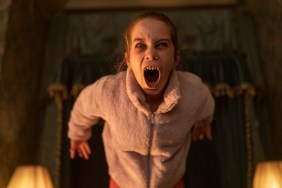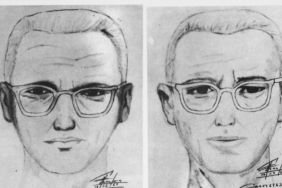
The Blu-ray edition of writer/director Dan Gilroy‘s Nightcrawler streets on February 10 (available to stream right now) and it doesn’t come with a wealth of features, but the audio commentary featuring Dan and his brothers Tony Gilroy, who served as producer, and John Gilroy, who served as the film’s editor, is a fascinating listen.
I took several notes while listening to the track but there are a couple things I have to say first, 1.) since they are brothers they sound very much alike and it’s often difficult to tell them apart so don’t expect too many direct quotes and 2.) while I can relay a lot of what I took away from the commentary it really stands as one you ought to listen to for yourself to entirely grasp everything they say.
There is a very fluid motion to the conversation and frequently they’ll discuss something entirely different from the scene on the screen at that moment. From the very beginning you get a strong feeling for the passion all three had for the project as Tony talks about Dan sending him the script, which he received immediately after directing The Bourne Legacy and had no thoughts to beginning work on another film, but he liked it so much he felt he had to direct it. Of course, it would be Dan making his feature debut on the film and as he found his brothers’ full support it became time to find the right actor. While several read for the role it was Jake Gyllenhaal that seemed most promising, and even tested Dan before taking on the role asking him, “How do you see the film?” To which Dan replied, “I see it as a success story,” which meshed with Gyllenhaal’s opinion of the feature.
Jake saw the character as a coyote, something he mentions again in the only other feature included on the Blu-ray, saying that while growing up in Los Angeles he would see a coyote on the street and it would just stare at you and you would know it either just killed something or wanted to kill you. He saw something similar in Lou, an animal instinct. From a filmmaking perspective all three brothers seem to agree on one specific thing about the character of Lou Bloom and that is that he’s a character that comes from nowhere, lacking a backstory and how sometimes that can prove to be a difficult scenario for an actor, but Gyllenhaal fit right in.
There’s talk of Jake’s decision to lose weight for the role (he lost 28 pounds) and his putting his hair in a “man bun” without consulting with the director, something that ended up making the pages of “People” magazine with polls asking what people thought. Some of Jake’s decisions for the character worried Dan at first, but considering Jake showed him absolute respect by never requesting to change a line of dialogue in the script he showed him the same respect when it came to his fearless interpretation of the character.
However, when it comes to Lou’s backstory there’s a discussion of one scene that was ultimately deleted from the film that gives what the Gilroy brothers refer to as a “sad” glimpse into a small bit of Lou’s backstory. The scene was to take place immediately after Lou leaves the construction site at the beginning of the film after being told, “I’m not hiring a fucking thief.” What was to come next saw Lou using something akin to a Tindr app on his phone and eventually meeting a nurse played by Kathleen York (“The West Wing”). Here’s the scene from the script:

Unfortunately, the Blu-ray doesn’t include any deleted scenes so you’ll have to use your imagination when it comes to that one, though the script doesn’t include any information as to what happens in her car.
The trio also touch on something I meant to include in my snippet for the film when I wrote my list of the Top Ten Movies of 2014, which is James Newton Howard‘s score and how it is what really affects people’s opinion of Lou. The music is not judgmental, it sets the audience at ease with the deplorable things Lou is doing. If anything you may laugh more than you are appalled, which is really saying something.
[amz asin=”B00Q3DMJZW” size=”small”]A lot of credit is paid to cinematographer Robert Elswit who shot on film during the day and used the Arri Alexa digital for the night shoots. Given a large percentage of the 28-day shoot, across 80 locations, was done at night, digital is primarily what you’re getting. I was interested to learn, however, that of those 80 locations, the interior of Lou’s apartment was on an actual set. Take that into consideration the next time you watch the movie and take notice of the appearance of natural light Elswit was able to achieve through Lou’s window. It’s impressive.
Also, when it comes to those 80 locations, John talks about the traditional way of shooting Los Angeles and how this movie goes against the stereotype of using tons of traffic, allowing the characters to exist in something of a different Los Angeles, a world without so much background noise. Dan also points out the happy accident of getting the Hollywood sign in the background of a shot late in the film as Lou is leaving the police station.
Mentioned on the commentary are technical advisors Austin and Howard Raishbrook, actual nightcrawlers (commonly referred to as “stringers”), and their contributions to the film, but to hear it from their own mouths on the included featurette, they say that while you won’t find them moving bodies for a better shot, that “generally speaking” what Lou is doing is based on things they’ve done. Anything to get the shot, be it flames, bodies or shootouts.
To attain that next level of reality they also sought actual police officers to help them stage the climactic finale, asking them how they might approach the suspects in the diner. Come to find out one group of advisors said they’d wait for back-up while another said they’d go in and order something and check things out. For the sake of a more intense scene, Dan chose the latter. And as for the police chase that follows, they brought in dispatchers and police officers to put together the radio chatter throughout the film including the final chase sequence (which was shot on Laurel Canyon Boulevard), not to mention those were real news anchors used throughout to help gain a greater level of authenticity.
Oh, and even more authentic, that’s Gyllenhaal driving near the end of the movie as the car spins out, tires smoking.
Finally, they discuss California’s Film & TV Tax Credit Program, which has since been changed, but they were risking a lot on a lottery system which they say was literally a guy pulling bingo balls out of a cage to see if your film would be picked to receive a tax break. You can read more on that here.
As someone that included Nightcrawler on his list of the Top Ten Movies of 2014, I obviously highly recommend this release. No, it doesn’t come loaded with extras, but it’s a movie that is immensely rewatchable, despite the dark, sinister and unsettling nature of its story. If anything, give it a watch at least once, let your mind sit with it and I whole-heartedly believe you’ll find your mind coming back to it again and again.
[amz asin=”B00Q3DMJZW” size=”large”]









